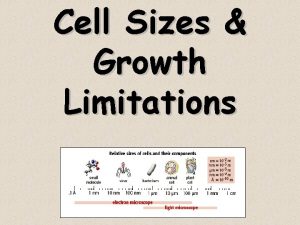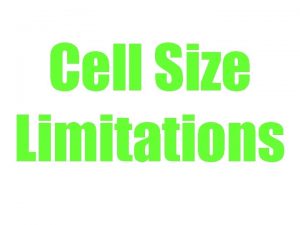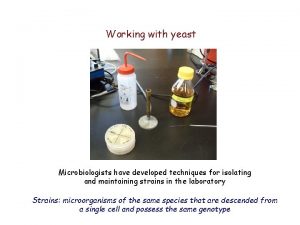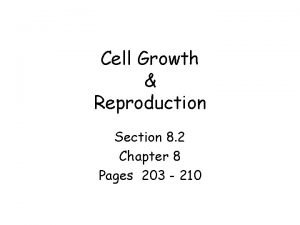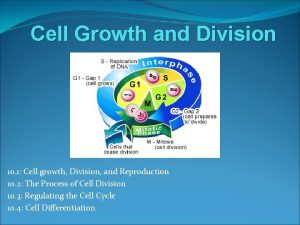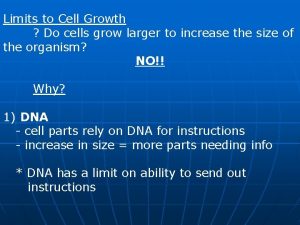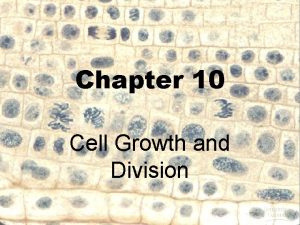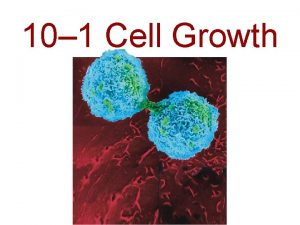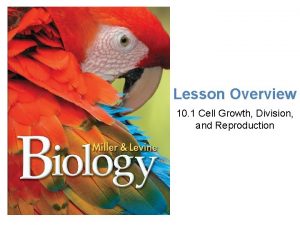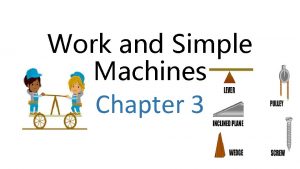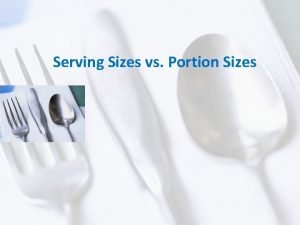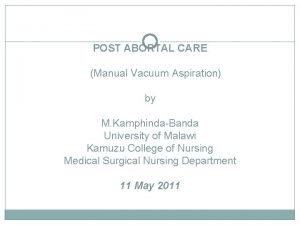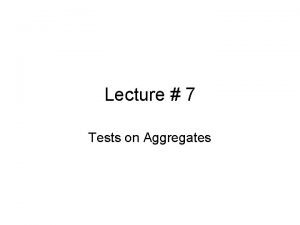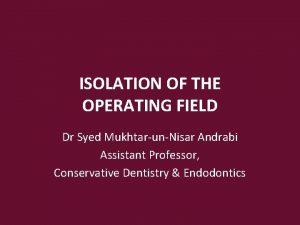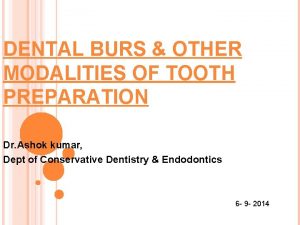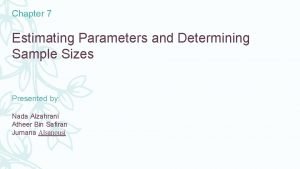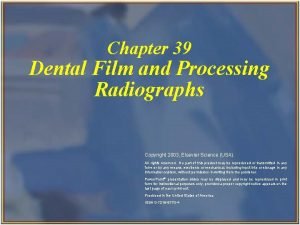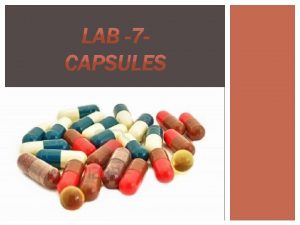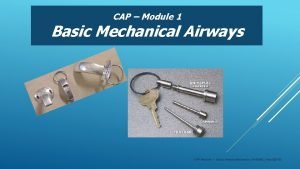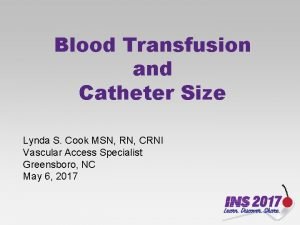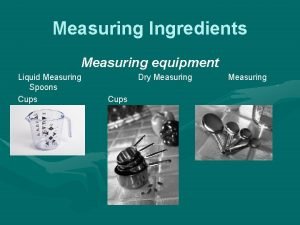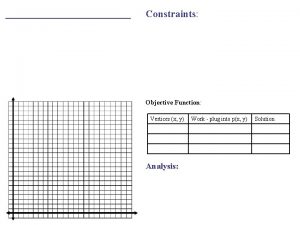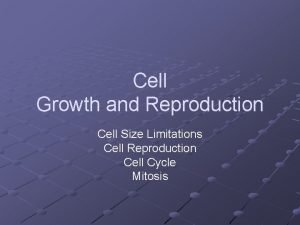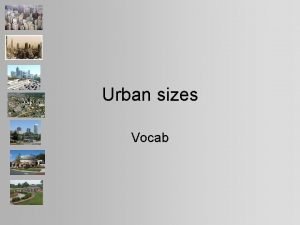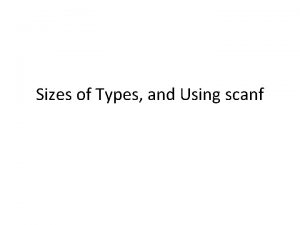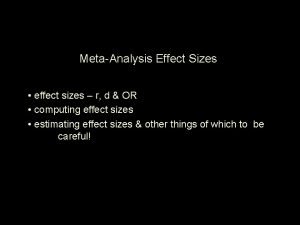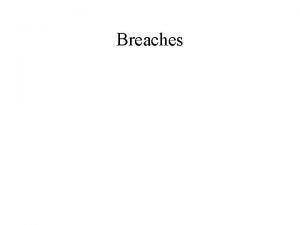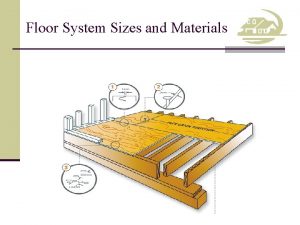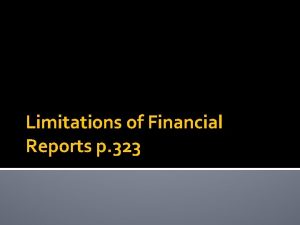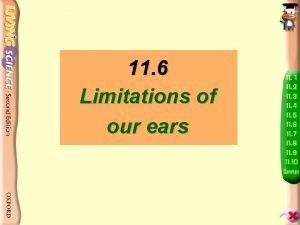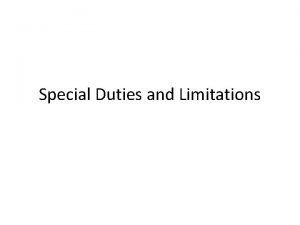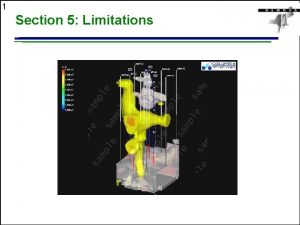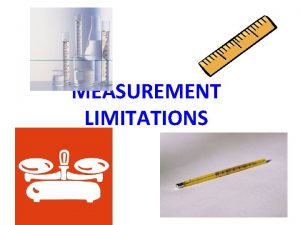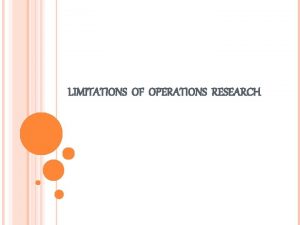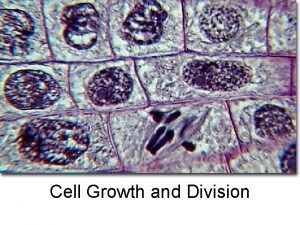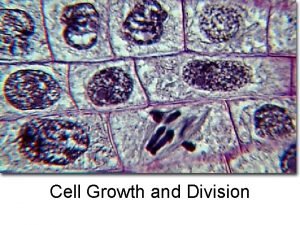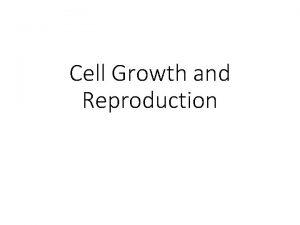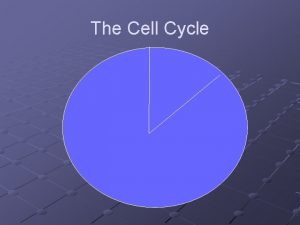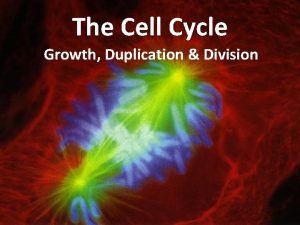10 1 Cell Growth Limitations on cell sizes









































- Slides: 41

10– 1 Cell Growth

Limitations on cell sizes • Unit of measure for most cells = µm (micrometer) – Micrometer (10– 6 m) = 1/1, 000 meter • Red blood cells = 8 µm dia. • Large nerve cells = 1 m in length • Most cells = 2 – 200 µm dia.

Surface area to volume ratio Surface area = _____ Volume = _______ Which dimension (area or volume) increases faster as cubes become larger? What will be the surface area and volume of the 3 rd cube? If the cell dimensions double, how many times more cytoplasm requires food/produces waste? Did the surface area increase this many times too?

Limits to Cell Growth • What problems does growth cause for cells? • Problems occur in cells if they get too big; ratio of surface area : volume – If ratio gets too small (ex. 1. 5: 1), cell is in danger of dying. • Diffusion time tends to limit most cell sizes – Very slow process; cells would die if they’re too big because diffused substances could take days/weeks to reach target organelles. • DNA control of the cell also limits size -- it relies on diffusion of regulating molecules it sends out from nucleus into the cytoplasm

• What must the cell do to overcome. . . – 1. Surface area : volume ratio problem – 2. DNA control limit; – 3. Diffusion time limit ? ? ? • DIVIDE and stay SMALL – This will keep surface area LARGE compared to volume • Division of the Cell • Before it becomes too large, a growing cell divides forming two “daughter” cells. • The process by which a cell divides into two new daughter cells is called cell division.

Cells will reproduce in order to. . . • • • 1. overcome previous limitations 2. replace old, worn out cells 3. replace damaged cells 4. grow an organism Most humans will divide cells for about 50 generations of cells • Offspring cells (daughter cells) must each receive the same DNA information as the original cell – Chromatin condenses into chromosomes just before cell division

END OF SECTION

10 -2 Cell Division

Chromosomes • Genetic information is passed from one generation to the next on chromosomes. • Before cell division, each chromosome is duplicated, or copied.

Chromosomes • Each chromosome consists of two identical “sister” DNA: chromatin (colored thread) chromosome (colored body) Sister chromatids. • Chromatids: one functions as a template and the other is an exact copy – Each pair of chromatids is attached at an area called the centromere. Centromere [Note: prokaryotic chromosome is a large loop of DNA] *Binary Fission*

Eukaryotic chromosomes Human chromosomes – just before cell division (950 X)

Cell Division • In eukaryotes, cell division occurs in two major stages. • The first stage, division of the cell nucleus, is called mitosis. • The second stage, division of the cell cytoplasm, is called cytokinesis.

Cell Life: Play by play Cell Life Cycle: Interphase: most of the life of the cell G 1, S phase, G 2 Mitosis: Brief time of cell division: nucleus division process which produces 2 daughter nuclei with exactly the same chromosomes as the parent cell Prophase, Metaphase, Anaphase, Telophase (with cytokinesis) Then the cycle starts over again for the two new daughter cells.

Events of the Cell Cycle Cell Division mation atid for Chrom Cell is at maximum size

– Prophase Mitosis • Prophase is the first and longest phase of mitosis. • Chromatin condenses into chromosomes. • The nuclear envelope breaks down. • The centrioles separate and take up positions on opposite sides of the nucleus. A spindle begins to form. Spindle forming » The centrioles lie in a region called the centrosome. Centromere » The centrosome helps to organize the spindle, a fanlike microtubule structure that helps separate the chromosomes. Chromosomes (paired chromatids)

Mitosis Centriole –Metaphase • The second phase of mitosis is metaphase. • The chromosomes line up across the center of the cell. • Microtubules connect the centromere of each chromosome to the poles of the spindle. Spindle fibers: made of microtubules; attach to centromeres Spindle

Mitosis –Anaphase Individual chromosomes • Anaphase is the third phase of mitosis. • The sister chromatids separate into individual chromosomes. • The chromosomes continue to move until they have separated into two groups.

– Telophase Mitosis • Telophase is the fourth and final phase of mitosis. • Chromosomes gather at opposite ends of the cell and lose their distinct shape. • A new nuclear envelope forms around each cluster of chromosomes. Cytokinesis: • pinching of cytoplasm in animal cells; • formation of a cell plate in plant cells

Cytokinesis • During cytokinesis, the cytoplasm pinches in half. • Each daughter cell has an identical set of duplicate chromosomes

Cytokinesis in Plants • In plants, a structure known as the cell plate forms midway between the divided nuclei. • The cell plate gradually develops into a separating membrane. • A cell wall then begins to appear in the cell plate. Cell plate Cell wall

Cell Cycle and Mitosis Summary

Prophase Metaphase Summary Image Anaphase Telophase A normal human has 46 chromosomes. How many sister chromatids would be present during metaphase of a human cell?

Fill in the missing terms at end of label lines (phase names 1 st). 4. Chromosomes 1. Interphase duplicate 5. Centromere 6. Chromosomes with sister chromatids 2. Metaphase 7. Spindle fibers attach to centromeres 12. Nuclear 10. Spindle fiber envelope reforms 9. Centriole Disappearing 8. nuclear envelope 11. Two new cells 13. Anaphase Spindle fibers pull chromatids towards centrioles

Results of mitosis • If organism is unicellular, this is reproduction (ex. Amoeba, Paramecium) *Binary Fission* • Development and growth occurs in multicellular organisms: – – Cells divide and cluster into tissues Tissues form into organs Organs function together as organ systems Organ systems make the whole organism

10 -3 Regulating the Cell Cycle


Control of the cell cycle • Normal cells proceed through the cell cycle under the control of groups of enzymes – Amounts of different enzymes increase and decrease • Amounts of enzymes act as triggers for the cell to proceed to the next step of the cell cycle. • If enzyme concentrations are incorrect the cell will stop and degrade • Normal cells will stop dividing when they contact other cells (contact inhibition) • Cancer cells lack contact inhibition • The type of cancer and its occurrence depend on the country one lives in.

Controls on Cell Division • Contact Inhibition

Cell Cycle Regulators – Internal Regulators • Proteins that respond to events inside the cell. • Allow the cell cycle to proceed only when certain processes have happened inside the cell. – External Regulators • Proteins that respond to events outside the cell. • Direct cells to speed up or slow down the cell cycle.

Cell Cycle Regulators Cyclins were discovered during a similar experiment to this one. A sample of cytoplasm is removed from a cell in mitosis. The sample is injected into a second cell in G 2 of interphase. As result, the second cell enters mitosis. –The amount of this protein in the cell rises and falls in time with the cell cycle. –Scientists called this protein cyclin because it seemed to regulate the cell cycle. –Cyclins regulate the timing of the cell cycle in eukaryotic cells.

• Cells rely on proper enzymes (a protein called cyclin) working in sequences – Structure of enzymes is coded for in the genes • A gene is a segment of DNA • Sometimes a gene is accidentally mutated (changed) by external factors: – UV light – Chemicals from tobacco, water supply, air pollution, etc. – X radiation, nuclear radiation

• Incorrect enzymes may lead to loss of cell cycle control –Cells divide more rapidly; don’t stop dividing when they contact other cells -make tumors (benign or malignant) and invade other parts of the body (metastasis). –This is the description of CANCER

Prevention • Diet – Low fat, more plant fiber – More vitamins A, C, E • These are antioxidants and reduce the amount of free radicals (charged particles) in the cells – These chemicals can attach to DNA and cause mutations which lead to cancer • More exercise • Avoid tobacco products • These all reduce the risk of cancer, but don’t guarantee escape from getting it -- especially if it’s in the family gene line.

END OF SECTION

2 cm 1 cm Cell growth 2 cm Surface area = __? __ Volume = __? __ SA : Vol = __? __

4 3 5 2 What does this diagram represent? What letters belong at numbers? Where does DNA replicate itself? Where is interphase? 1 Where are organelles produced? Where is there a cell plate made? Where is anaphase?

4 G 1 G 2 2 1 G 0 What kinds of cells in our bodies do this?

Normally growing cells Abnormally rapid growing small cells Break-away cells A ? ? B. Spreading process is called _____? ? ______

Phase? 1 Phase? 3 9 4 2 5 10 6 Phase? 7 8

Place terms in ascending order Cell Organ system Tissue

That’s all. . . Do well on your test : )
 Men's shirt sizes are determined by their neck sizes
Men's shirt sizes are determined by their neck sizes Absolute growth rate and relative growth rate
Absolute growth rate and relative growth rate Primary growth and secondary growth in plants
Primary growth and secondary growth in plants Step growth polymerization vs chain growth
Step growth polymerization vs chain growth Primary growth and secondary growth in plants
Primary growth and secondary growth in plants Primary growth and secondary growth in plants
Primary growth and secondary growth in plants Geometric growth graph
Geometric growth graph Neoclassical growth theory vs. endogenous growth theory
Neoclassical growth theory vs. endogenous growth theory Organic vs inorganic growth
Organic vs inorganic growth Limitations of cell size
Limitations of cell size Cell size limitations
Cell size limitations Cell size limitations
Cell size limitations Yeast cell growth curve
Yeast cell growth curve Chapter 8 cell growth and division section 8-2 answer key
Chapter 8 cell growth and division section 8-2 answer key 10-1 cell growth
10-1 cell growth Limits to cell growth
Limits to cell growth Section 10-2 cell division answer key
Section 10-2 cell division answer key Limits to cell growth
Limits to cell growth Cell growth division and reproduction
Cell growth division and reproduction How do you calculate mechanical advantage
How do you calculate mechanical advantage Venti starbucks in ml
Venti starbucks in ml Lvl sizes
Lvl sizes Pollen grain diagram
Pollen grain diagram 2 oz of meat
2 oz of meat Rota trach
Rota trach Mva cannula sizes by color
Mva cannula sizes by color How to know if an effect size is small medium or large
How to know if an effect size is small medium or large Aggregate sizes
Aggregate sizes Isolation of operating field
Isolation of operating field Normal frame sizes
Normal frame sizes What are the characteristics and market forms of shellfish
What are the characteristics and market forms of shellfish Roof truss detail
Roof truss detail Types of burs used in dentistry
Types of burs used in dentistry Chest tube chamber
Chest tube chamber Common critical values
Common critical values Advantages of automatic film processing
Advantages of automatic film processing Evaluation of capsule
Evaluation of capsule Cap module 1
Cap module 1 Catheter gauge for blood transfusion
Catheter gauge for blood transfusion Solid ingredients examples
Solid ingredients examples A carpenter makes bookcases in two sizes
A carpenter makes bookcases in two sizes Portrait resolution sizes
Portrait resolution sizes










